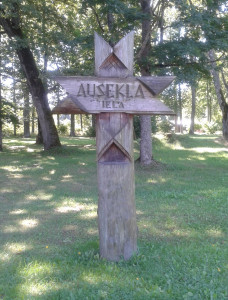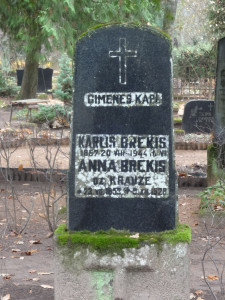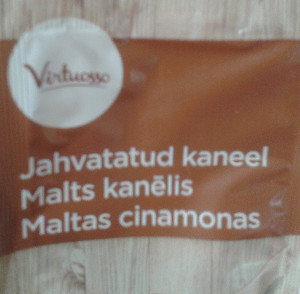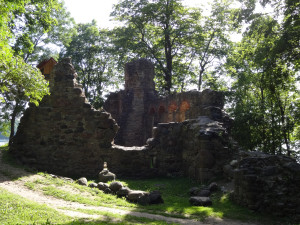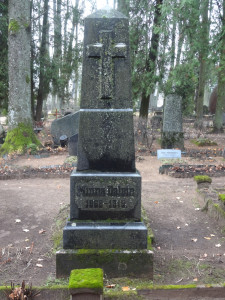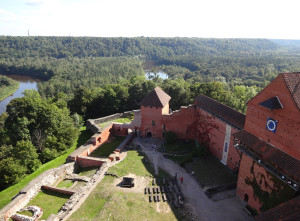Latvia wasn’t always called Latvia – and for most of history, you won’t have found a place called “Latvia” on a map. Only in the 20th century did Latvia become an independent country. This also means that if you are looking through historical texts for information about the people who lived here, you need to know what place names to look for – though keep in mind that these place names can be written in many different ways, depending on who was writing them down!
So what should you be looking for? Latvia has gone through many historical periods with many different rulers, so in this post we’ll start at the very beginning – well, the earliest documented beginning, at least. Most of these names come from documents from the 10th to 13th centuries, such as the Livonian Chronicle, the Livonian Rhymed Chronicle, feudal charters and documents from the Livonian Brothers of the Sword, the name given to the German crusaders.
These crusaders came to Latvian territory in the late 12th century, when it was divided among a number of small principalities and counties, some of them nominally independent, others as vassal states. The dominant narrative prevalent today is that Christianity came to the Baltic region as a result of the German crusaders, but that isn’t entirely true – Christianity had already started to make inroads from the east via Polotsk, and there were several established Orthodox churches in the region.
The largest power in the area was the principality of Polotsk, and a number of Latvian principalities were its vassal states. The most famous one is Jersika, which was also called Letija or Lotgola, and thus provided the root for the modern name of Latvia.
Jersika was under the dominion of the Latgalian tribes, as were the principalities of Atzele, Imera, Koknese, PietÄlava and TÄlava. The region these covered corresponds to modern-day Latgale and Vidzeme, with the exception of the coastal regions, which were under the control of the Livonians.
The Livonians controlled the area around the Gulf of RÄ«ga, and partway down the western coast of modern-day Latvia. They shared the principality of Idumeja with the Latgalians, and controlled the regions of Metsepole, Turaida, Vanema and Ventava, as well as the area around RÄ«ga. Since the arriving German crusaders made their landfall around the mouth of the Daugava, the Livonians were the first to have contact with these crusaders.
South of the Livonians in Kurzeme were the lands of the Curonians – who, like other coastal peoples, had developed a reputation as sailors and sometimes pirates. They had contacts with the Vikings across the Baltic Sea in Scandinavian lands, both friendly and unfriendly – sometimes allies, sometimes enemies. They also began to move northwards in the 11th and 12th centuries, conquering the regions of Vanema and Ventava. They also controlled the regions of Bandava, Ceklis, Duvzare, Megava, PilsÄts and Piemare. Megava and PilsÄts are now in Lithuania.
The militaristic Semigallians to the east of the Curonians did what they could to defend their territory from neighbours and invaders, making and breaking alliances as it suited them, and as a result, maintained their independence from the crusaders for a longer period. Having initially worked with the Germans against the Livonians and Lithuanians, they later allied with the Curonians and Lithuanians against the Germans. The Semigallians controlled the districts of Dobele, Dobene, Mežotne, PlÄne, Silene, SpÄrnene, TÄ“rvete, Upmale and Žagare. Semigallian territories today are divided between Latvia and Lithuania.
East of the Semigallians and south of the Latgalians there were the Selonians. By the time the German crusaders arrived, they had already partially assimilated with the Latgalians and/or Lithuanians – northern Selonian districts were subject to the principality of Jersika and Koknese, while southern districts were ruled by Lithuanian principalities. This Latgalian character remains in the modern-day area of Selonia (SÄ“lija, one of the five cultural districts of Latvia), even though most of the past 800 years placed it in a completely different sphere of influence (Lutheran German rather than Polish Catholic or Russian Orthodox). The Selonian districts were called Alektene, Kalvene, Maleisine, Medene, Pelone and Tovrakste. Maleisine, Medene and Pelone are today located in Lithuania.
With the arrival of the German crusaders, many of these districts and borders disappeared – but what did they turn into? For that, come back next week!

